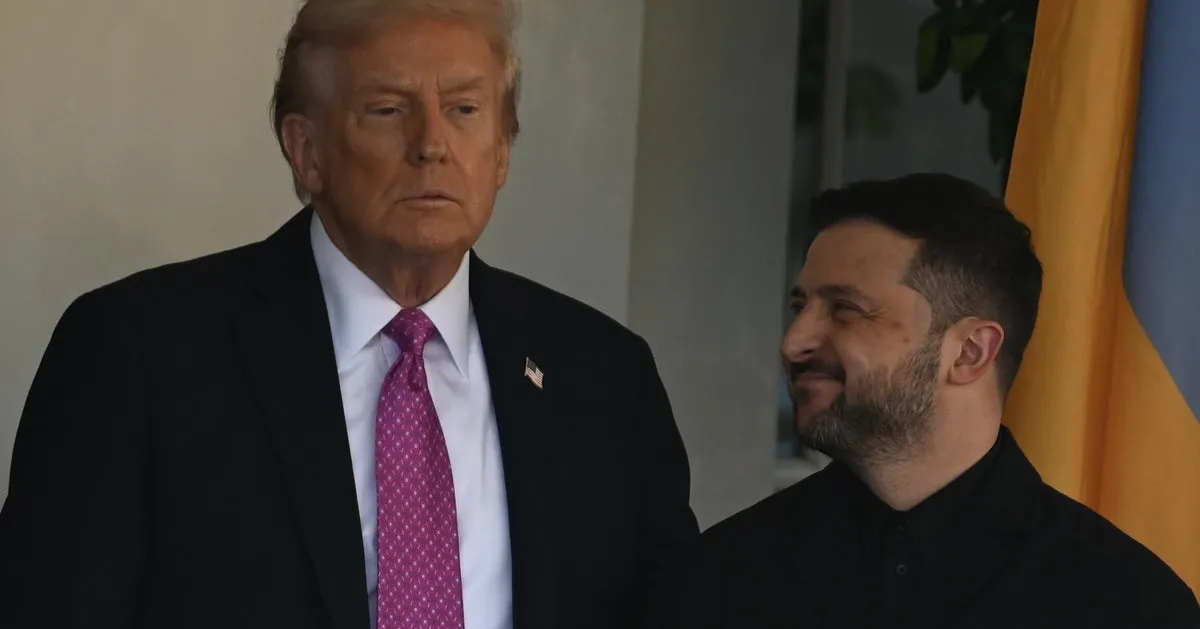
On Friday, President Donald Trump held a significant meeting with Ukrainian President Volodymyr Zelenskyy at the White House. Shortly after their discussion, Trump made headlines by suggesting that Russia should be allowed to retain control over the Ukrainian territories it has seized since the onset of the conflict initiated by Vladimir Putin nearly four years ago. In a social media post, Trump stated, “It is time to stop the killing, and make a DEAL! Enough blood has been shed, with property lines being defined by War and Guts. They should stop where they are.”
Trump's remarks come amid ongoing hostilities, emphasizing the urgent need for peace. He urged both sides to "claim Victory" and let history determine the outcome, stating, “No more shooting, no more Death, no more vast and unsustainable sums of money spent.” He expressed a strong opinion that the war would never have escalated if he had been in office, lamenting the continuous loss of life and urging combatants to "GO HOME TO YOUR FAMILIES IN PEACE!”
Upon arriving in Florida, where he plans to spend the weekend at his country club in Palm Beach, Trump reiterated his call to cease hostilities. He advised, “Go by the battle line wherever it is or else it gets too complicated. Stop right now at the battle line.” However, the clarity of Trump's position remains uncertain. It is unclear whether this represents a significant policy shift or simply another of his spontaneous ideas that might fade quickly.
During his meeting with Zelenskyy, Trump expressed astonishment at the strained relationship between the Ukrainian leader and Putin, noting, “There’s a lot of bad blood with the two presidents.” While Putin has faced widespread condemnation for his military actions in Ukraine, including charges of war crimes from the International Criminal Court, Trump’s remarks suggest a complex diplomatic stance.
This meeting followed a two-hour phone call Trump had with Putin, where he claimed they made “great progress” in discussions aimed at resolving the ongoing conflict, which began with Russia’s invasion in February 2022. One of the key topics discussed was the potential transfer of U.S. Tomahawk missiles to Ukraine, which could strike targets deep within Russia, up to 1,500 miles away. However, Trump appeared to hesitate on the issue, raising concerns about the U.S. military's needs in a potential conflict.
Trump also proposed the idea of meeting with Putin again in Budapest, Hungary, a country currently led by Viktor Orbán, a leader known for his pro-Putin stance. This location is historically significant as it was where Russia promised not to invade Ukraine after the dissolution of the Soviet Union.
In response to Trump, Zelenskyy adopted a diplomatic strategy that has proven effective with other U.S. leaders: showering Trump with praise. He congratulated Trump on his “successful ceasefire in the Middle East,” a remark that followed a similar statement made online the previous day. Zelenskyy’s choice to wear a blazer and tie, rather than military fatigues, was a tactical move to avoid criticism from pro-Trump media figures.
Historically, Trump has oscillated in his views regarding the Ukraine conflict. Initially, he praised Putin for his military actions, calling him a “genius,” and later shifted blame onto Zelenskyy and President Joe Biden for the invasion. In recent months, he has begun to hold Putin accountable for the ongoing attacks against Ukrainian civilians.
Despite Trump's claims of a good relationship with Putin, the frequency of Russian attacks on Ukraine has reportedly intensified since his return to office. Trump’s previous statements have led to criticism, particularly after he rolled out a red carpet for Putin during a previous visit. Following their recent discussions, the situation in Ukraine remains precarious as Putin continues to launch assaults on Ukrainian cities.
As the conflict persists, the international community watches closely to see how Trump’s suggestions might influence future diplomatic efforts and the ongoing war in Ukraine.